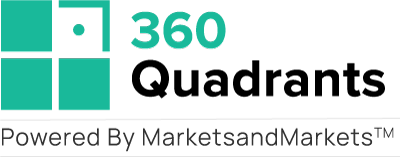The Water Treatment Chemicals Manufacturers Quadrant is a comprehensive industry analysis that provides valuable insights into the global market for Water Treatment Chemicals. This quadrant offers a detailed evaluation of key market players, technological advancements, product innovations, and emerging trends shaping the industry. MarketsandMarkets 360 Quadrants evaluated over 150 companies of which the Top 14 Water Treatment Chemicals Manufacturers were categorized and recognized as the quadrant leaders.
Water treatment chemicals can be defined as chemical compounds used in the water treatment process to remove impurities, which cause corrosion, scales, high turbidity, and biological imbalance. These impurities can be metallic, organic, or non-organic in nature. The chemicals that are used to eliminate the impurities are corrosion inhibitors, coagulants & flocculants, scale inhibitors, chelating agents, biocides & and disinfectants, and pH adjusters, among others.
The 360 Quadrant maps the Water Treatment Chemicals Manufacturers based on criteria such as revenue, geographic presence, growth strategies, investments, and sales strategies for the market presence of the Water Treatment Chemicals’ quadrant. While the top criteria for product footprint evaluation included Type (Coagulants & Flocculants, Corrosion Inhibitors, Scale Inhibitors, Biocides & Disinfectants, Chelating Agents, Anti-Foaming Agents, PH Adjusters & Stabilizers), Source (Bio-Based, Synthetic), Applications (Boiler Water Treatment, Cooling Water Treatment, Raw Water Treatment, Water Desalination, Others), and End-use Industry (Residential, Commercial, Industrial).
Key trends highlighted in 360 Quadrant’s study include:




 Anthesis Group
Anthesis Group
 Oct 2025
Oct 2025

